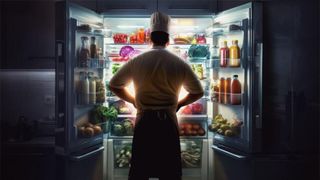Figure drawing: A beginner's guide
Follow these expert figure drawing tips to help you master the art of drawing people.
Author: Chris Legaspi
Great figure drawings feel alive. One of an artist's greatest tools to communicate life in a drawing is gesture. It's the movement from one form to another. That's why it follows the natural flow of human anatomy. The first place to look is in the torso – where it is contracting and where it is relaxing. The relaxed or stretch side is the primary gesture – the 'action line'.
To learn gesture, I enjoy timed life drawing, five minutes or less. Begin with the action line. Next connect the shoulders and the hips, then close the form at the pinch side. As time permits, I add rhythm lines and simplify any anatomical details. With the torso established, proceed to the limbs. I use a simple oval to lay-in the head and neck.
Next, I use a rhythmic gesture on the outer edge of the legs to form a graphic shape. Finally, the arms can be simplified into tapering, curved rectangles, with a simple oval to capture the hand. This lay-in not only communicates movement, but is also a great base to add details, lighting and shading too.
01. What is gesture?
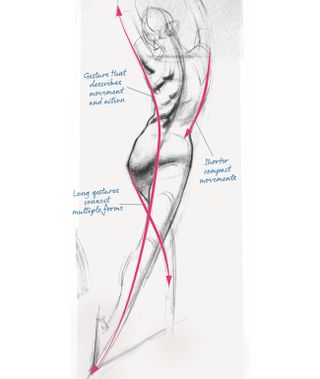
When I draw figures, my first priority is to describe the movement. That's what gesture does. It communicates what the figure or form is doing. Gesture also describes movement between separate forms of the body and how these forms relate to one another. When done right, gesture can help create the illusion of a living, breathing figure.
02. Where is gesture?
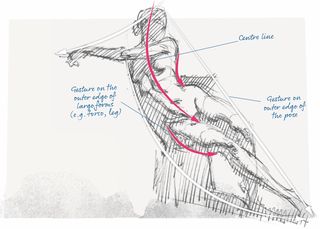
Gesture occurs everywhere in the body and in many forms. For example, gesture occurs on the outer edge of the figure and on the larger forms like the torso and leg. Gesture also occurs in smaller forms. For example, the arm, wrist, palm and fingers are all connected by gesture.
03. Exterior gesture
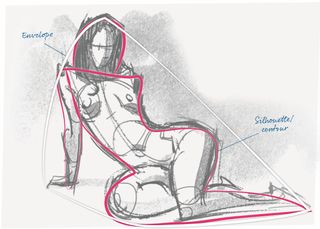
One way to connect the points of a pose is known as an envelope. This simplifies the figure into one graphic shape. The second form of exterior gesture is the silhouette or contour. This closely follows the contour or edge of the figure and connects key parts like the shoulder, waist, hips and limbs
Get the Creative Bloq Newsletter
Daily design news, reviews, how-tos and more, as picked by the editors.
04. Interior gesture
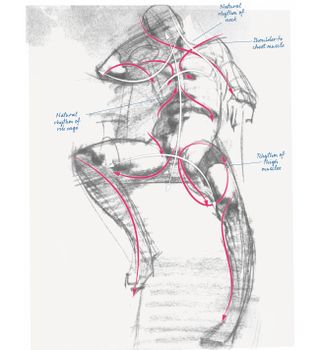
Gestures on the inside of the figure are known as rhythms. Rhythms are naturally occurring lines that are often based on anatomy. For example, the neck flows to the shoulder, the chest flows into the arm, and the hips flow naturally to the thigh. I like to use rhythms to place anatomy and small details.
05. How to see gesture
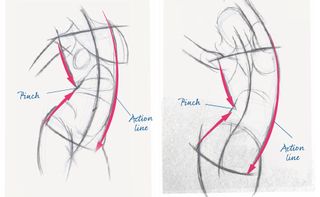
To see gesture, I first focus on the torso and then look for key anatomical landmarks such as the shoulder, outer hips (great trochanter), pit of the neck and groin. Connecting these points reveals the action line or the primary gesture of the pose, and also the contraction or pinch that happens on the opposing side of the action line.
06. The action line
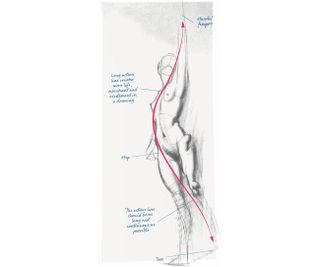
The most important gesture in any drawing is the action line, also known as the longest line or thrust. This line describes the primary movement in the pose and should be drawn as long and fluid as possible. I use it as the foundation of the entire drawing, and every mark I make either reinforces or complements the action line.
07. How to make good marks
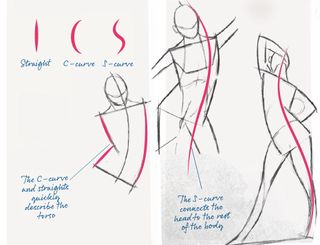
To make drawings clean and easy to read, I use only three marks: straight, C-curve or S-curve. For example, a C-curve is great for the stretch or elongated side of the torso. Straights quickly connect the shoulders and hips. For the action line, a long S-curve connects the head to the legs and feet.
08. Making gesture lines longer

I draw gesture lines as long, smooth and uninterrupted as possible, especially the action line. To do this, I often look for the extremities like the fingers, toes, and the top of the head, and use gesture to connect these points. Within the body, I use and follow the anatomy to keep the gesture flowing.
09. Drawing poses: under two minutes
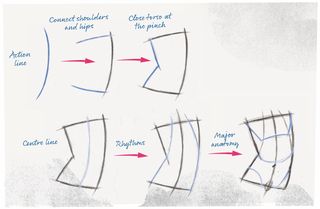
When I draw really short poses (two minutes or less), I like to first isolate the torso so I can clearly see the action line. Once I describe the action line, I connect the shoulders and the hips and then close the shape at the pinch side. Next, I continue to add rhythms and major anatomy until the allowed time is up.
10. Drawing poses: under five minutes

When drawing short poses under five minutes, I first describe the torso and then simplify the head. Next, I draw the legs as one shape, using gesture to connect the hips to the feet. For the arms, I use long tapering lines that describe their outer shape and movement. A simple oval is great for quickly describing any negative space.
This is an edited version of advice that was originally published in ImagineFX, the world's best-selling magazine for digital artists. Subscribe here.
Related articles:

Thank you for reading 5 articles this month* Join now for unlimited access
Enjoy your first month for just £1 / $1 / €1
*Read 5 free articles per month without a subscription

Join now for unlimited access
Try first month for just £1 / $1 / €1

